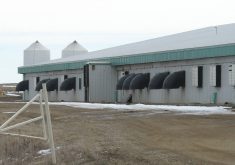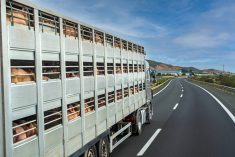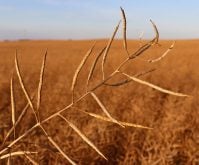The impacts of a California animal welfare law that took full effect on the first day of 2024 are already being felt, according to Manitoba Pork general manager Cam Dahl.
“Yes, Jan. 1 was a deadline but, in truth, Proposition 12 has been enforced since July,” he said.
Why it matters: While California might seem far away, Canadian pork producers are concerned about the precedent Prop 12 sets in the highly integrated North American hog market.
Read Also

Seeding Indigenous agricultural prosperity
National Circle for Indigenous Agriculture and Food says Indigenous agricultural success needs strong relationships.
Proposition 12, or Prop 12, is a 2018 California ballot initiative that mandates meat and eggs sold in California must come from animals raised in compliance with the state’s welfare regulations, which affect space allotments for sows. Prop 12 includes foods imported into the state.
Those regulations were initially slated to come into effect on July 1, 2023, but in June 2023, a California judge extended the enforcement date to Jan. 1, 2024, for meat that was already in the supply chain.
“The impact isn’t just starting today; we have seen that impact for some time,” said Dahl.
When pressed for specifics, he pointed to signals such as price trends for piglets, a major market for Manitoba. The province exports millions of piglets to the U.S. every year.
“I don’t have empirical evidence to back this up, but in looking at things like the prices for isoweans going into the U.S., it is my perception that yes, it is already having an impact,” Dahl said.
He is concerned that Prop 12 will fragment the North American marketplace.
“That’s something that’s going to hurt farmers and consumers alike. Farmers are going to see a lower return, and consumers are going to see higher prices.
“So, that’s a lose-lose situation. We have signed a trade agreement with the United States of America; it isn’t with individual states. To have different sanitary and phytosanitary conditions across different states is just something that’s not in the interests of anybody on either side of the border.”
U.S. tension
Parts of the U.S. pork sector are also unenthused about the change. The National Pork Producers Council, the national voice for the American pork industry, launched a legal challenge against the law that reached the U.S. Supreme Court. In May of last year, the top court upheld Prop 12.
A Washington State think tank recently released a statement arguing that the cost of compliance with Prop 12 will likely shrink the U.S. national hog herd and lead to further consolidation within the industry.
The Washington Policy Center Initiative on Agriculture (WPCIA) estimated that the cost of retrofitting facilities to Prop 12-compliant penning, which require additional space requirements, would be about US$3,500 per sow.
“For an average hog farm of 1,000 pigs, that represents a cost of $3.5 million,” wrote WPCIA director Pam Lewison.
“Given the downturn in net income (down 28 per cent from 2022), the stark choice facing many small- to medium-sized farm owners may be to sell to larger farms,” Lewison wrote. “Consolidation in the meat production industry has long been a source of concern for producers, consumers, and even lawmakers.”
She added that consumers will bear that cost “as both supply constricts and the actual cost of compliance is revealed.”
The overall impact to pork price won’t be known until data from the next marketing cycle filters through, she said.
The pork industry in Manitoba is in a similar holding pattern.
“We’re on the sidelines, waiting to see, you know, how it will shake out,” said Bill Alford, president of Headingly-based H@Ms Marketing Services. “Business doesn’t like uncertainty. You’re not going to spend a bunch of money until you know for certain.”
Alford said the timing of the new regulations makes it even trickier to understand economic signals.
“The industry in general in North America has been trying to rebalance supply with demand to those pre-pandemic levels, so you’re seeing that coupled with the uncertainty of Prop 12,” he said.
“We see it in the futures market. It’s been quite undervalued relative to the near-term cash market for hog values.”
Dahl also flagged uncertainty in the sector.
“The problem with measures like Proposition 12 is that they’re not based on science and research. If that’s how regulations are set, then those regulations become arbitrary, and the goal posts are going to continue to shift.”
That uncertainty imposes enormous costs on producers, he added.
“If you spend a few million dollars to refurbish your barn and then, two years later, the goal posts shift again, it’s just untenable to keep production going for that market.”
















